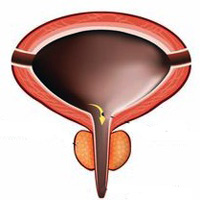The role of the multi-disciplinary team and multi-disciplinary therapeutic protocol in the management of the chronic pelvic pain: There is strenght in numbers!

Accepted: February 15, 2021
All claims expressed in this article are solely those of the authors and do not necessarily represent those of their affiliated organizations, or those of the publisher, the editors and the reviewers. Any product that may be evaluated in this article or claim that may be made by its manufacturer is not guaranteed or endorsed by the publisher.
Authors
Introduction: The aim of the study is to evaluate the effectiveness of a Multi-disciplinary team (MDT) and multi-disciplinary approach in the treatment of Chronic Pelvic Pain (CPP).
Methods: The data of all consecutive patients referred for a CPP from 11/2016 to 2/2019 has been prospectively collected. The sample was divided in two groups: Group A, made by patients managed after the institution of our MDT, and Group B, made of patients managed before this date. The MDT is composed by three urogynecologists, a psychologist and a physiotherapist. All Group A patients underwent a weekly bladder instillation with dimethyl sulfoxide (DMSO), kinesiotherapy for trigger points and Percutaneous Tibial Nerve Stimulation for 10 consecutive weeks. Patients were asked to perform a self-treatment following the Stanford Protocol and to adhere to a specific diet. All Group B patients were managed only with DMSO instillations and a strict diet.
Results: The Group A was made of 41 females and 6 males while the Group B was made of 38 females and 5 males. The Group A patients showed a statistically significant improvement in the Pelvic Pain Urgency Frequency, in the frequency times reported at the 6 months voiding diary, and a better Patient Global Impression of Improvement.
Conclusions: Our data support the efficacy of the MDT in the management of CPP. The multimodal approach might represent an effective and reproducible non-invasive option to manage successfully CPP.
How to Cite
PAGEPress has chosen to apply the Creative Commons Attribution NonCommercial 4.0 International License (CC BY-NC 4.0) to all manuscripts to be published.

 https://doi.org/10.4081/aiua.2021.2.211
https://doi.org/10.4081/aiua.2021.2.211



